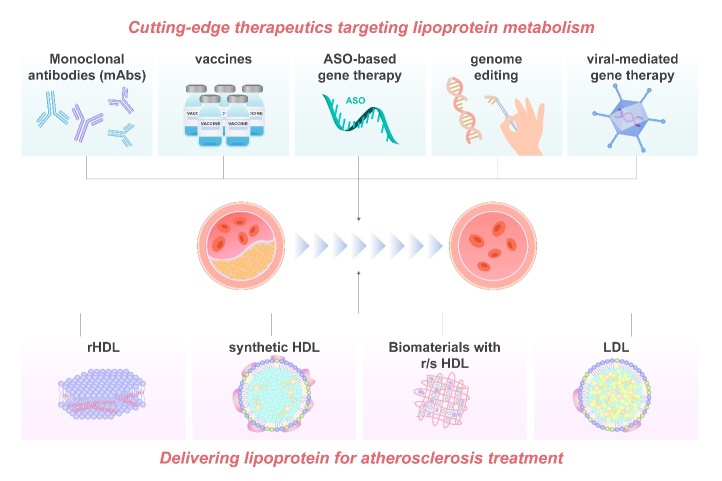Figure 2.
Summary of targeting and delivering therapies on atherosclerosis treatment. To resolve the limitations in the efficacy and safety of existing treatment methods of atherosclerosis, biological drugs with improved targeting are currently being explored. One of the most promising directions is to target lipoprotein metabolism. Monoclonal antibodies (mAbs), vaccines, antisense oligonucleotide (ASO)-based gene therapy, genome/base editing technologies and viral-mediated gene therapy are all cutting-edge therapeutic approaches that target lipoprotein metabolism. Another advanced therapy strategy is to delivery natural or synthetic lipoproteins for the treatment of atherosclerosis. Reconstituted (r) HDL has been widely accepted as an ideal drug delivery vehicle, because of their nano-size, unique cellular uptake mechanism via a non-endocytic pathway. Synthetic HDL (sHDL), using a nanoparticle template to tailor the structure and the chemical composition of the HDLs, is featured with improved size, shape and surface chemistry and with less batch-to-batch variation. Biomaterials combined with r/s HDL may have enhanced therapeutic efficacy. LDL could be applied as a vesicle to delivery targeted therapeutic drugs.

